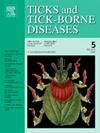人类土拉菌感染的临床特征和诊断方法:来自德国的回顾性单中心病例研究
IF 3.4
2区 医学
Q2 INFECTIOUS DISEASES
引用次数: 0
摘要
土拉菌是引起土拉菌病的病原体,其临床表现多样,发病率低,给诊断和治疗带来了挑战。因此,临床医生的认识相对较低。本研究报告了德国一家三级医疗中心12年来兔热病病例的临床特征、诊断方法和治疗结果。本回顾性单中心病例系列研究了2013年1月至2024年12月期间在德国洪堡萨尔大学医学中心诊断的所有兔热病病例。从电子病历中确定病例,根据血清学、聚合酶链反应(PCR)检测或血培养结果,将兔热病的确定性分为确定、可能和可能感染。临床数据从患者记录中提取,并辅以临床医生的随访信息。共发现14例兔热病,其中确诊6例,可能3例,可能5例。临床表现变化很大,最常见的是(溃疡)腺体形式(10/14)。14例患者中有11例需要进行侵入性诊断或手术。最初的误诊是常见的,导致延误诊断和多个疗程无效的抗生素。明确的治疗包括氟喹诺酮类药物或强力霉素,大多数患者的症状得到缓解。兔热病的不同临床表现,从典型的(溃疡)腺形式到严重和不典型的表现,说明了其诊断和临床的复杂性。提高认识和早期考虑是至关重要的,特别是在流行地区或有遗忘性环境暴露的患者。本文章由计算机程序翻译,如有差异,请以英文原文为准。
Clinical characteristics of and diagnostic approaches to human Francisella tularensis infection: a retrospective, monocentric case study from Germany
Francisella tularensis, the causative agent of tularemia, poses a challenge for diagnosis and treatment due to its diverse clinical presentations and low incidence. Hence, the awareness among clinicians is comparatively low. This study reports the clinical characteristics, diagnostic approaches, and treatment outcomes of tularemia cases at one tertiary center in Germany over a 12-yearperiod.
This retrospective monocentric case series considered all tularemia cases diagnosed at Saarland University Medical Center in Homburg, Germany between January 2013 and December 2024. Cases were identified from electronic medical records, and the certainty of tularemia was graded as definite, probable and possible infection, based on results of serology, polymerase chain reaction (PCR) assays, or blood cultures. Clinical data were extracted from patient records and supplemented by follow-up information from the clinicians.
We identified 14 tularemia cases, including 6 definite as well as 3 probable and 5 possible cases. The clinical presentation was highly variable, with the (ulcero-)glandular form being the most common entity (10/14). Invasive diagnostics or surgery were required in eleven out of 14 patients. Initial misdiagnosis was common, leading to delayed diagnosis and multiple courses of ineffective antibiotics. Definite treatment included fluoroquinolones or doxycycline, and led to resolution of symptoms in most patients.
The varied clinical manifestations of tularemia, from classic (ulcero-)glandular forms to severe and atypical presentations illustrate its diagnostic and clinical complexity. Enhanced awareness and early consideration are crucial, especially in endemic areas or patients with anamnestic environmental exposures.
求助全文
通过发布文献求助,成功后即可免费获取论文全文。
去求助
来源期刊

Ticks and Tick-borne Diseases
INFECTIOUS DISEASES-MICROBIOLOGY
CiteScore
6.90
自引率
12.50%
发文量
185
审稿时长
6-12 weeks
期刊介绍:
Ticks and Tick-borne Diseases is an international, peer-reviewed scientific journal. It publishes original research papers, short communications, state-of-the-art mini-reviews, letters to the editor, clinical-case studies, announcements of pertinent international meetings, and editorials.
The journal covers a broad spectrum and brings together various disciplines, for example, zoology, microbiology, molecular biology, genetics, mathematical modelling, veterinary and human medicine. Multidisciplinary approaches and the use of conventional and novel methods/methodologies (in the field and in the laboratory) are crucial for deeper understanding of the natural processes and human behaviour/activities that result in human or animal diseases and in economic effects of ticks and tick-borne pathogens. Such understanding is essential for management of tick populations and tick-borne diseases in an effective and environmentally acceptable manner.
 求助内容:
求助内容: 应助结果提醒方式:
应助结果提醒方式:


